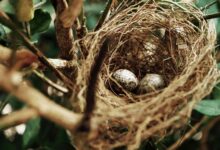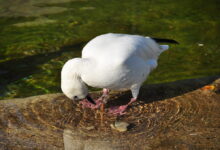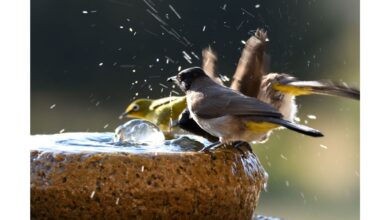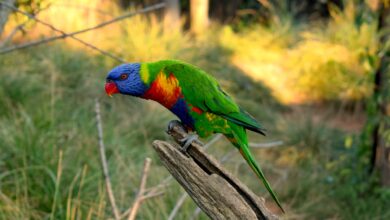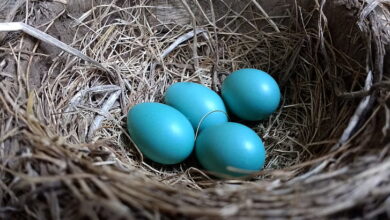Types of Peacocks: Detailed Male vs Female Comparison
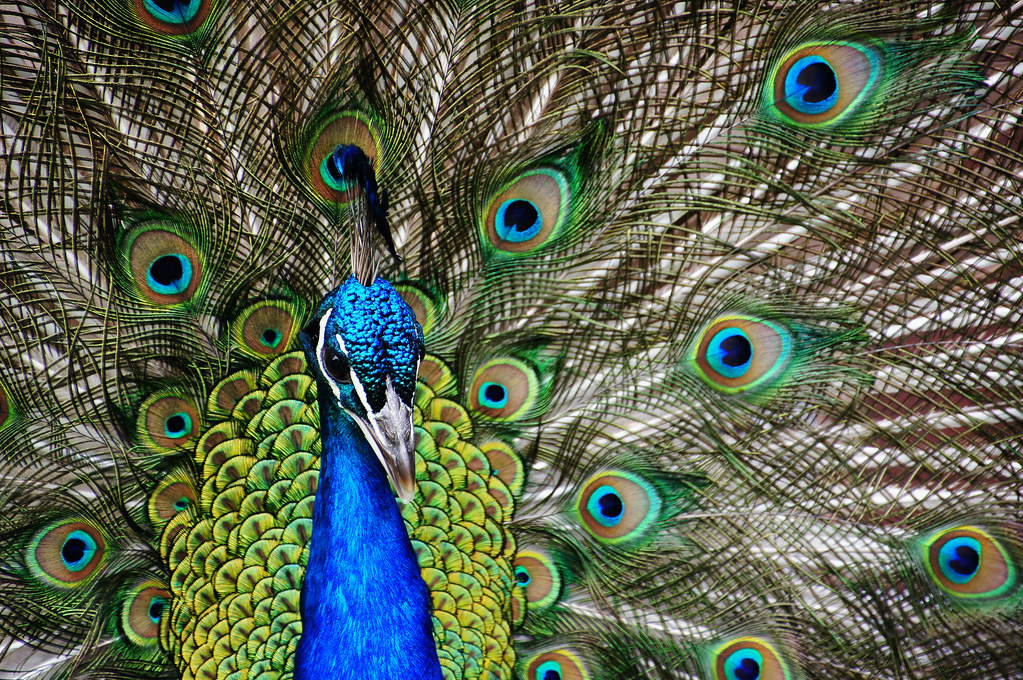
Peacocks are nature’s most spectacular birds, renowned for their vivid plumage and elaborate displays. But did you know that there’s more than one type of peacock? And that male and female peacocks exhibit some fascinating differences?
Let’s delve into the enchanting world of peacocks, exploring the various types and comparing the males and females of the species.
Types of Peacocks
Indian Peafowl

The Indian Peafowl, or Pavo cristatus, is perhaps the most well-known peacock type. Native to the Indian subcontinent, these peafowls are celebrated for their vibrant blue and green plumage.
Characteristics
Indian Peafowls have striking blue heads, necks, and chests, with a fan-like crest of feathers on their heads. The males are famous for their long, iridescent tail feathers adorned with eye-catching “eyes.”
Habitat
These peafowls thrive in forests, farmlands, and around human settlements where they can find ample food and shelter.
Behaviour
Indian Peafowls are ground feeders that forage for insects, seeds, and small creatures. They are also known for their loud, honking calls, especially during the mating season.
Green Peafowl

The Green Peafowl, or Pavo muticus, is a native of Southeast Asia and is known for its striking green and gold feathers.
Characteristics
Green Peafowls have a more streamlined appearance compared to their Indian counterparts. The males possess long tail feathers that shine with a metallic green hue.
Habitat
These birds inhabit dense forests and prefer more secluded areas than Indian Peafowls.
Behaviour
Green Peafowls are shy and elusive, often hiding in dense foliage. Their vocalization is more restricted than that of Indian Peafowls.
Congo Peafowl

The Congo Peafowl, Afropavo congensis, is native to the rainforests of the Congo Basin in Central Africa.
Characteristics
This species is smaller and less flashy than the Indian and Green Peafowls. Both males and females have similar plumage with shades of green, blue, and brown.
Habitat
Congo Peafowls reside in dense, tropical rainforests where they can remain well-camouflaged.
Behaviour
These peafowls are elusive and rarely seen. They forage on the forest floor for fruits, seeds, and small invertebrates.
Physical Differences: Male vs Female Peacocks
Plumage
Male peacocks are renowned for their extravagant plumage, especially during the breeding season when they fan out their tail feathers in a spectacular display. Females, or peahens, have more subdued plumage, typically brown and grey, which helps them blend into their surroundings and protect their young.
Size
Males are generally larger than females, with the most noticeable difference being the length of their tail feathers. Males’ tail feathers can be several feet long, while females have much shorter tails.
Tail Features
The males’ tail feathers are adorned with eye-like patterns, which are used to attract females. These feathers can be raised into a fan and shaken in a courtship display. Females lack these ornamental tail feathers.
Behavioral Differences: Male vs Female Peacocks
Mating Rituals
Male peacocks are known for their elaborate courtship displays, spreading their tail feathers, strutting, and making calls to attract females. Females are the choosers, selecting mates based on the quality and size of the male’s display.
Territorial Behavior
Males are territorial, especially during the breeding season. They will defend their space from other males and display aggressively to assert dominance.
Parenting Roles
Females take on the primary role of nesting and rearing the young. They lay their eggs in a well-hidden nest on the ground and are solely responsible for incubation and caring for the chicks once they hatch.
Dietary Habits: Male vs Female Peacocks
Common Diet
Both male and female peacocks have similar diets consisting of insects, small mammals, reptiles, and various plant materials like seeds and fruits.
Foraging Techniques
While foraging, males and females exhibit similar behaviours, scratching the ground with their feet to uncover food. However, males may sometimes engage in foraging in more open areas, where they can also watch for potential rivals or threats.
Vocalization: Male vs Female Peacocks
Calls and Sounds
Male peacocks are more vocal, especially during the mating season. Their calls can be loud and far-reaching, attracting females and deterring other males. Females are generally quieter but will call out to their chicks and communicate subtly with other peafowls.
Communication Purposes
Peacocks’ calls serve multiple purposes, including attracting mates, signalling danger, and establishing territory. The variety and intensity of these calls can vary depending on the situation and the individual bird.
Lifespan and Health: Male vs Female Peacocks
Average Lifespan
Male and female Peafowls typically live around 15 to 20 years in the wild. However, this can vary based on environmental factors and predation.
Common Health Issues
Peafowls can suffer from various health issues, including parasitic infections, respiratory diseases, and nutritional deficiencies. Regular health checks and a balanced diet are crucial for those kept in captivity.
Conservation Status of Peacocks
Threats
Habitat loss, hunting, and the pet trade are significant threats to peafowl populations. The Green Peafowl, in particular, is listed as endangered due to habitat destruction and poaching.
Conservation Efforts
Efforts to conserve peafowl populations include habitat protection, anti-poaching measures, and captive breeding programs to bolster wild populations.
Peacocks in Culture and Symbolism
Historical Significance
Peacocks have been revered in many cultures throughout history. In Hinduism, the peacock is associated with the god Krishna. In Greek mythology, it is linked to the goddess Hera.
Symbolic Meanings
Peacocks birds symbolize beauty, immortality, and pride. Their feathers are often used in art and fashion to represent these qualities.
Peacocks as Pets
Pros and Cons
Keeping peacocks as pets can be rewarding but also challenging. They require ample space, a proper diet, and social interaction. While their beauty is captivating, their loud calls and need for space can be drawbacks.
Care Requirements
Peacocks need a large, secure area to roam, regular veterinary care, and a nutrient-rich diet. Potential owners should also be prepared for their social and behavioural needs.
Interesting Facts About Peacocks
Unique Traits
Did you know that peacocks can “cry” to attract rain? Their calls are believed to mimic the sound of thunder, encouraging rainfall.
Fun Facts
Peacocks can run surprisingly fast, reaching up to 10 miles per hour. Despite their large size, they can also fly short distances, usually to escape predators.
Conclusion
Peacocks are truly fascinating creatures with diverse types and remarkable differences between males and females. Whether it’s their stunning plumage, intriguing behaviours, or cultural significance, peacocks continue to captivate and inspire us.
FAQs
What is the most colourful type of peacock?
The Indian Peafowl is considered the most colourful, especially the males with vibrant blue and green feathers.
How can you tell a male peacock from a female?
Males have long, iridescent tail feathers with eye-like patterns, while females have shorter, brown and grey plumage.
Are peacocks endangered?
The Green Peafowl is endangered due to habitat loss and poaching, while the Indian Peafowl is not currently at risk.
What do peacocks eat in the wild?
Peacocks eat insects and small animals and plant materials like seeds and fruits.
Can peacocks fly?
Yes, peacocks can fly short distances to escape predators or reach roosting spots.
